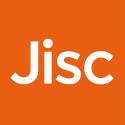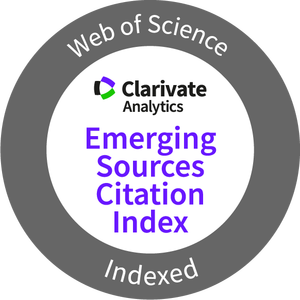Effects of dietary advice, aerobic exercise, and virtual reality games on the quality of life of obese adolescent females
Resumen
Previous studies have demonstrated that aerobic exercise and dietary changes positively impact mental and physical health. This study aimed to assess and compare the effects of three interventions (dietary advice, aerobic exercise, and VR games) on the QoL of obese adolescent females. A total of 100 adolescent females aged 12-17 years with Class A obesity (BMI 30-34.9 kg/m²) were randomly assigned to two groups. Study Group (SG): 50 participants received a combination of diet advice, aerobic exercise, and VR games three times per week for 8 weeks. Control Group (CG): 50 participants received diet advice and aerobic exercise alone, without VR games, for the same duration. There was a significant increase in the QoL of the SG compared with that of the CG (p < 0.01). No significant differences in waist circumference, waist–hip ratio, fat mass, muscle mass, water content, depression and anxiety scores (p > 0.05). By comparing the interventions, the research provided insights into significant increase in QoL of SG compared with that of CG. These results could inform future health and education policies aimed at enhancing the health of teenagers in the digital era.
Descargas
-
Resumen403
-
PDF 162
Citas
Anderson-Hanley, C., Tureck, K., & Schneiderman, R. L. (2018). Virtual reality to enhance movement and cognitive engagement in older adults: A pilot study. Games for Health Journal, 7(1), 21–27.
Baños, R. M., Botella, C., & Rubió, G. (2016). Virtual reality and body image: Virtual reality and cognitive-behavioral therapy for body dissatisfaction. Cyberpsychology, Behavior, and Social Networking, 19(11), 703–709.
Barnes, S., & Prescott, J. (2018). Empirical Evidence for the Outcomes of Therapeutic Video Games for Adolescents with Anxiety Disorders: Systematic Review. JMIR Serious Games, 6(1), 1-10. https://doi.org/10.2196/games.9530
Côté, S., Bouchard, S., & Guitard, T. (2019). Virtual reality as a new avenue for treating stress-related disorders in adolescents. Journal of Mental Health, 28(1), 56–65.
Craft, L. L., & Perna, F. M. (2004). The benefits of exercise for the clinically depressed. Primary Care Companion to The Journal of Clinical Psychiatry, 6(3), 104–111. https://doi.org/10.4088/pcc.v06n0301
da Silva, A. M., da Silva, M. P., & Leite, M. A. (2021). Effect of virtual reality on quality of life, physical and mental health in children and adolescents: A systematic review. Journal of Clinical Medicine, 10(14), 1-13.
Ekelund, U., Brown, W. J., & Steene-Johannessen, J. (2011). Does physical activity attenuate, or even eliminate, the adverse effects of sitting? The Lancet, 378(9798), 903-911.
Finkelstein, S., Ran, C., & Wood, G. (2020). Active video games for youth: A systematic review. Journal of Sport and Health Science, 9(4), 329–343.
Freeman, D., Reeve, S., Robinson, A., Ehlers, A., Clark, D., Spanlang, B., & Slater, M. (2017). Virtual reality in the assessment, understanding, and treatment of mental health disorders. Psychological Medicine, 47(14), 2393–2400. https://doi.org/10.1017/S003329171700040X
Gao, Z., Lee, J. E., & Pope, Z. (2021). Effects of exergaming on physical and psychological outcomes: A meta-analysis. Journal of Physical Activity and Health, 18(2), 237–249.
Golomb, M. R., McDonald, B. C., Warden, S. J., Yonkman, J., Saykin, A. J., Shirley, B., Huber, M., Rabin, B., Abdelbaky, M., Nwosu, M. E., Barkat-Masih, M., & Burdea, G. C. (2010). In-home virtual reality videogame telerehabilitation in adolescents with hemiplegic cerebral palsy. Archives of Physical Medicine and Rehabilitation, 91(1), 1–8. https://doi.org/10.1016/j.apmr.2009.08.153
Gutiérrez-Maldonado, J., & Rangel-Gómez, M. (2015). Effects of virtual reality exposure on relaxation: A randomized controlled trial. Journal of Clinical Psychology, 71(9), 935–944.
Janssen, I., Katzmarzyk, P. T., & Ross, R. (2012). Waist circumference and not body mass index explains obesity-related health risk. The American Journal of Clinical Nutrition, 79(3), 379-384.
Kato, P. M., Cole, S. W., Bradlyn, A. S., & Pollock, B. H. (2008). A video game improves behavioral outcomes in adolescents and young adults with cancer: a randomized trial. Pediatrics, 122(2), 305-317.
Kokaridas, D., Patsiaouras, A., & Anastasiadis, P. (2021). Virtual reality gaming and adolescents' physical health: A systematic review. Journal of Adolescence, 88, 89–104.
Kothgassner, O. D., Höller, Y., Felnhofer, A., & Kryspin-Exner, I. (2016). Virtual reality exposure therapy for anxiety disorders: A meta-analysis. Journal of Anxiety Disorders, 41, 75–90.
Kris-Etherton, P. M., Eckel, R. H., Howard, B. V., St Jeor, S. T., & Bazzano, L. A. (2002). The role of diet in the prevention and treatment of cardiovascular disease. The American Journal of Clinical Nutrition, 75(1), 1–3.
Lee, J., Lee, H., Kim, S., & Lee, S. (2021). The effectiveness of virtual reality exercise on adolescents' health outcomes. Journal of Adolescent Health, 68(3), 500–508.
Li, L., Yu, F., Shi, D., Shi, J., & Tian, Z. (2019). Effects of virtual reality-based exercise on individuals’ cognitive performance, physical health, and psychological well-being: A meta-analysis. Computers in Human Behavior, 93, 75–84.
Lotan, M., Yalon-Chamovitz, S., & Weiss, P. L. (2009). Improving physical fitness of individuals with intellectual and developmental disability through a Virtual Reality Intervention Program. Research in Developmental Disabilities, 30(2), 229–239. https://doi.org/10.1016/j.ridd.2008.03.005
Maddison, R., Mhurchu, C. N., Jull, A., Prapavessis, H., & Rodgers, A. (2012). Active video games: The mediating effect of enjoyment on physical activity. International Journal of Behavioral Nutrition and Physical Activity, 9(1), 1-4.
McCormick, D., & Muir, E. (2019). Virtual reality as a treatment tool for mental health disorders: An overview. Journal of Clinical Psychology, 75(3), 476–489.
Murray, A., Kuhn, S., & McPherson, M. (2021). The effect of physical activity on depression, anxiety, and psychological well-being in young people: A systematic review. Journal of Adolescent Health, 69(6), 941–953.
Nigg, C. R., Burbank, P. M., & An, S. (2020). Physical activity, body composition, and virtual reality: An emerging intersection of health research. Obesity Research & Clinical Practice, 14(4), 333–342.
O’Neill, J. R., Loughnan, S. R., & Chatterton, K. M. (2017). Physical activity and dietary interventions for the prevention of obesity: A systematic review and network meta-analysis. Obesity Reviews, 18(8), 898–909.
Oja, P., Laukkanen, R., & Kujala, U. M. (2015). The health benefits of physical activity: The evidence. Scandinavian Journal of Medicine & Science in Sports, 25(2), 75–81.
Pope, Z. C., Zeng, N., Lee, J. E., & Gao, Z. (2020). Virtual reality games and physical activity: A review of the literature. Games for Health Journal, 9(2), 85–94.
Riva, G., Wiederhold, B. K., & Mantovani, F. (2019). Virtual reality for health care: A review. Annual Review of Cybertherapy and Telemedicine, 17, 13–18.
Rizzo, A. S., & Bouchard, S. (2019). Virtual reality for psychological and neurocognitive interventions. Springer.
Rosenbaum, S., Tiedemann, A., Sherrington, C., Curtis, J., & Ward, P. B. (2014). Physical activity interventions for mental illness: A systematic review and meta-analysis. Journal of Psychiatry & Neuroscience, 39(6), 1–17.
Smith, C., Taha, T., O'Hara, N., Doyle, J., & Khan, A. (2020). Immersive virtual reality as a potential exercise intervention: Exploring the role of perceived exertion and enjoyment. Cyberpsychology, Behavior, and Social Networking, 23(5), 320–327.
Staiano, A. E., & Calvert, S. L. (2011). The promise of exergames as tools to measure physical health. Entertainment computing, 2(1), 17–21. https://doi.org/10.1016/j.entcom.2011.03.008
Staiano, A. E., Abraham, A. A., & Calvert, S. L. (2020). Adolescent exergame play for weight loss and psychosocial improvement: A controlled intervention. Games for Health Journal, 9(4), 270-276.
Thivel, D., Ring-Dimitriou, S., Weghuber, D., Frelut, M. L., & O’Malley, G. (2016). Physical activity combined with dietary interventions for adolescent obesity management. Journal of Adolescent Health, 59(1), 23–31.
Vorderer, P., & Klimmt, C. (2020). The mobile user’s mindset in a permanently online, permanently connected society. In R. Ling, L. Fortunati, G. Goggin, S. W. Campbell, & Y. Park (Eds.), The Oxford handbook of mobile communication and society (pp. 54–70).
Wang, X., Cai, Z. D., Jiang, W. T., Fang, Y. Y., Sun, W. X., & Wang, X. (2022). Systematic review and meta-analysis of the effects of exercise on depression in adolescents. Child and Adolescent Psychiatry and Mental Health, 16(1), 1-19. https://doi.org/10.1186/s13034-022-00453-2
Las obras que se publican en esta revista están sujetas a los siguientes términos:
1. El Servicio de Publicaciones de la Universidad de Murcia (la editorial) conserva los derechos patrimoniales (copyright) de las obras publicadas, y favorece y permite la reutilización de las mismas bajo la licencia de uso indicada en el punto 2.
© Servicio de Publicaciones, Universidad de Murcia, 2013
2. Las obras se publican en la edición electrónica de la revista bajo una licencia Creative Commons Reconocimiento-NoComercial-SinObraDerivada 3.0 España (texto legal). Se pueden copiar, usar, difundir, transmitir y exponer públicamente, siempre que: i) se cite la autoría y la fuente original de su publicación (revista, editorial y URL de la obra); ii) no se usen para fines comerciales; iii) se mencione la existencia y especificaciones de esta licencia de uso.
3. Condiciones de auto-archivo. Se permite y se anima a los autores a difundir electrónicamente las versiones pre-print (versión antes de ser evaluada) y/o post-print (versión evaluada y aceptada para su publicación) de sus obras antes de su publicación, ya que favorece su circulación y difusión más temprana y con ello un posible aumento en su citación y alcance entre la comunidad académica.



















